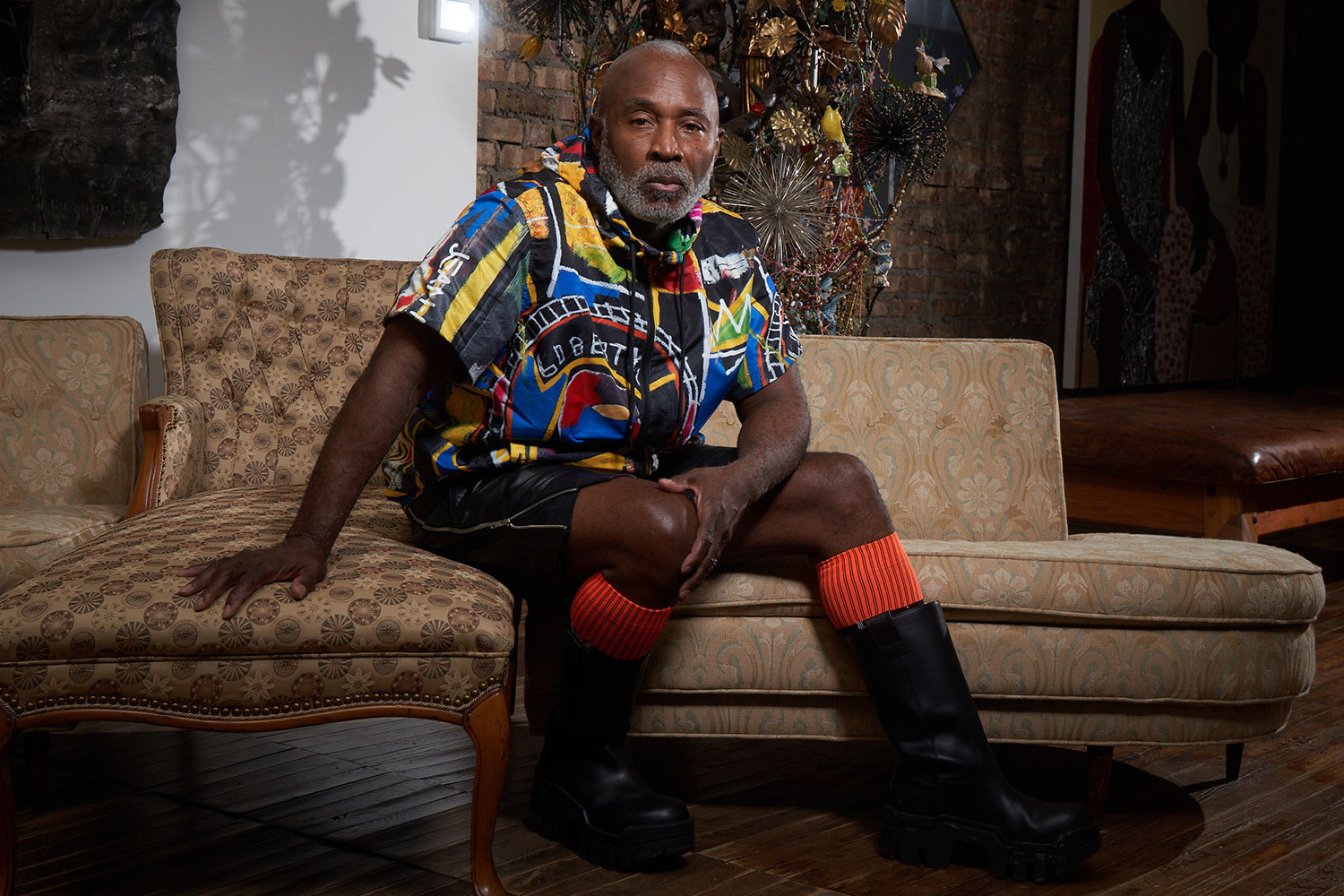His mixed-media art may be colorful and vibrant. And his layering of plastic dolls, beads, silk flowers, and other artifacts may trigger memories. But at its heart, Nick Cave’s powerful work is meant to provoke neither joy nor nostalgia. Instead, through his art, Cave forces us to interrogate the way we live with injustice. “It is something that took over and led me to become an activist in this artistic way,” he says.
Cave has spent the past three decades calling attention to police violence against Black people, the harms of both subtle and overt racism, and the cruelty embedded in othering. But his work has never felt more relevant — or more urgent. And it was hard to miss this year. He had a major retrospective at the Museum of Contemporary Art and an immersive fashion-focused exhibition with his brother Jack at the DuSable Museum of African American History. This summer, one of Cave’s films was projected onto the façade of the Merchandise Mart.
The 63-year-old native of Fulton, Missouri, came to Chicago in 1988 to take a teaching position at the School of the Art Institute. At the time, his elaborate textile sculptures fashioned out of reclaimed items like tools, dominoes, and salvaged building materials focused on family dynamics. But that changed in 1991 after the police beating of Rodney King. “That was the first video incident that we all experienced together,” he says. In King, he saw himself. “My consciousness was awakened in a way it hadn’t been before.”
King’s beating inspired Cave to craft his first Soundsuit, an intricately assembled costume made with thousands of beads, sequins, yarns, and textured threads and meant to hide gender, sexuality, race, and class. Dozens of Cave’s Soundsuits — 15 of them new — were on display in Forothermore, the MCA retrospective, which is now traveling to the Guggenheim Museum in New York City. Spinner Forest, the installation that greets visitors, is indicative of Cave’s approach: It’s only when you look closely at the hanging strips of brilliant, reflective wind spinners that you see imagery of guns, designed to draw attention to violence.
“I’ve been purely focused on bringing light to these subjects,” he says. “This has been my way to deal with the daily trauma. Trauma doesn’t go away overnight — it resurfaces. It’s my duty, my civic responsibility, to put it in our faces.”



